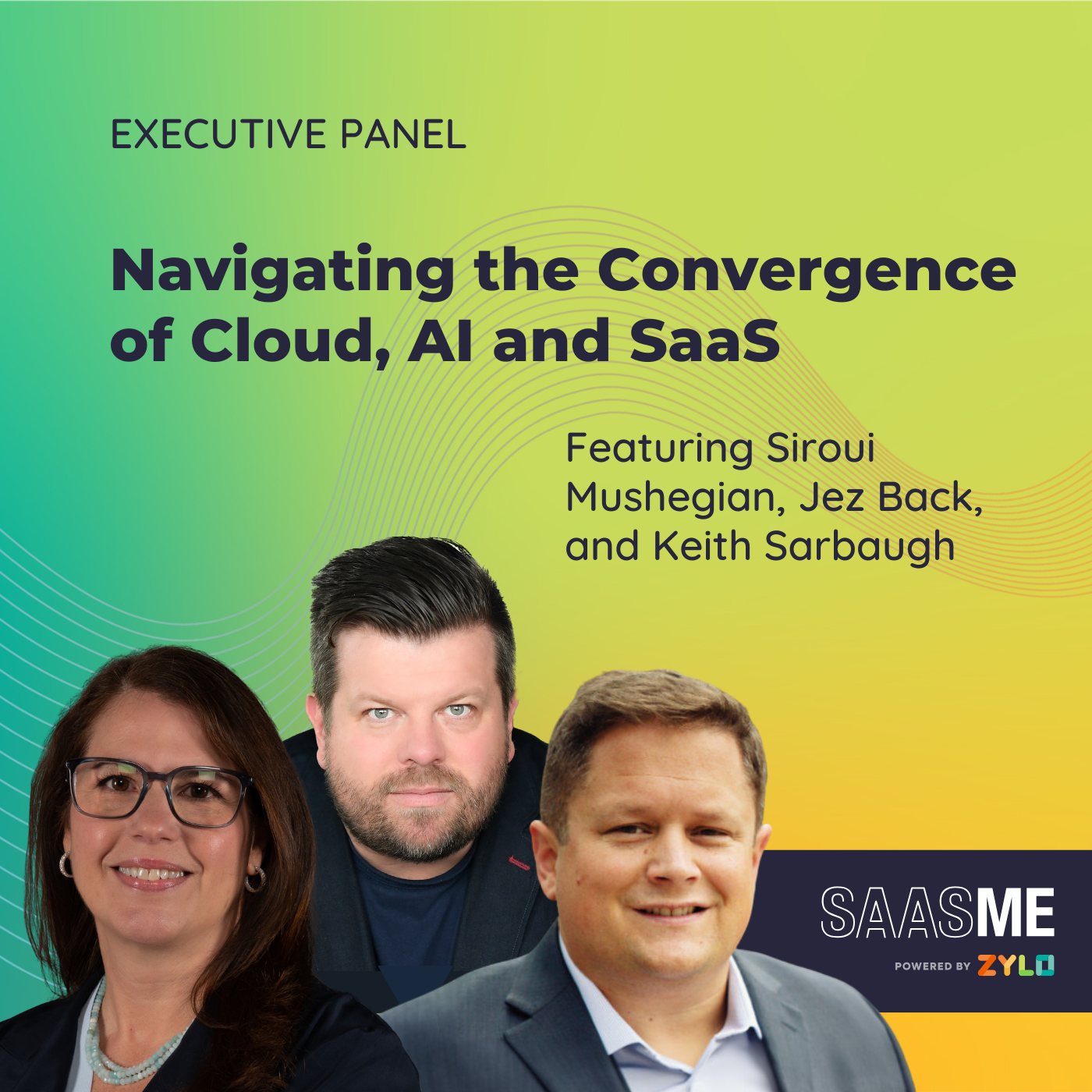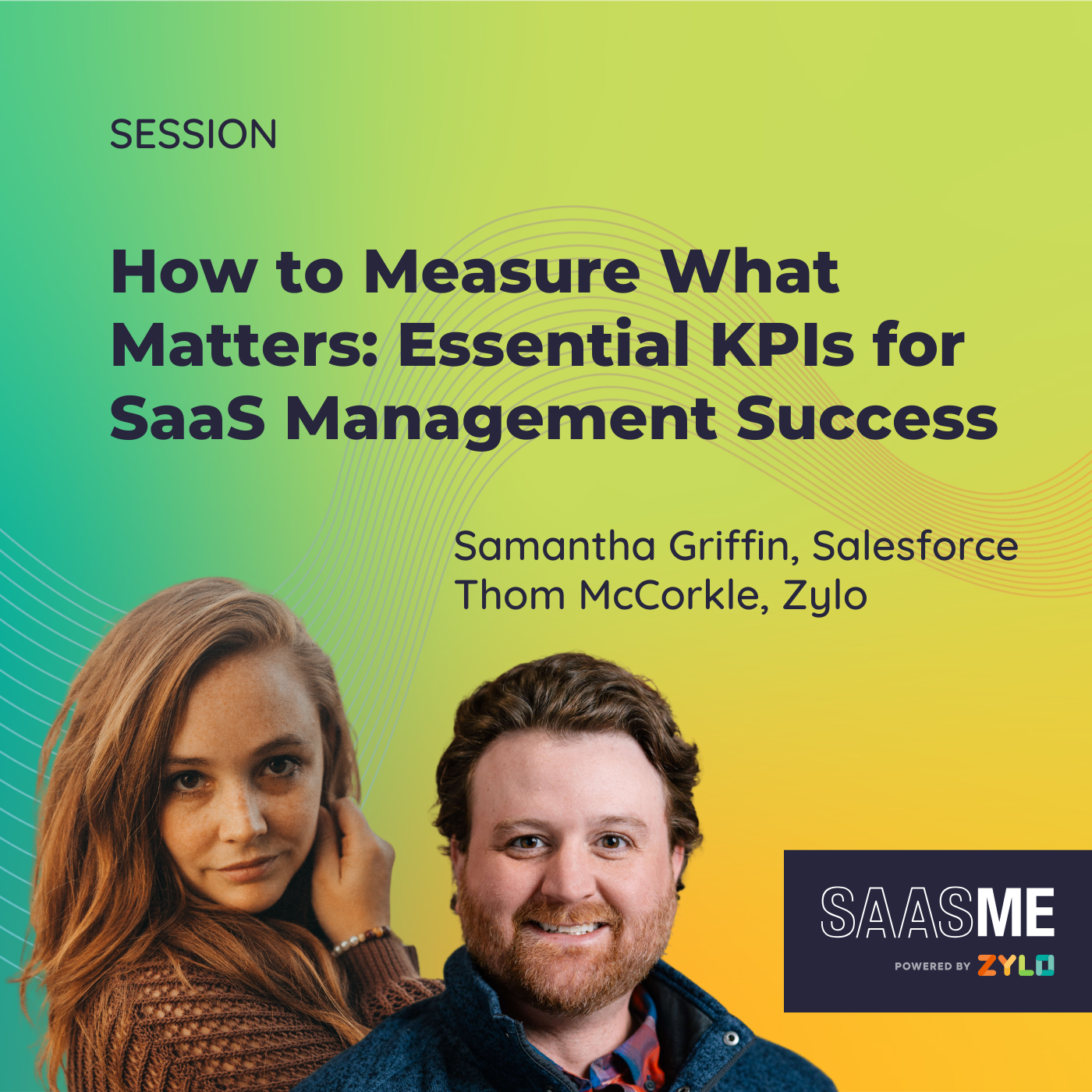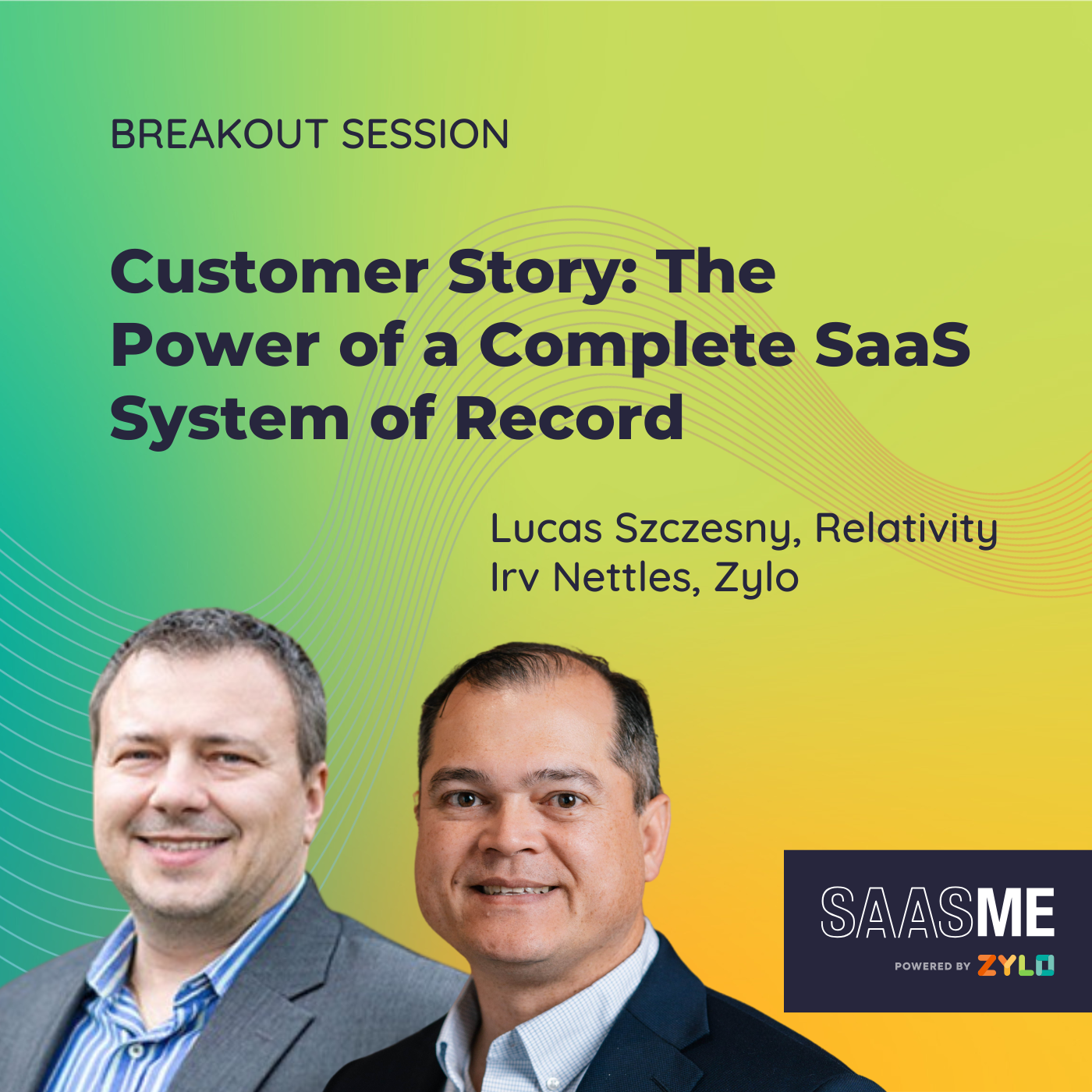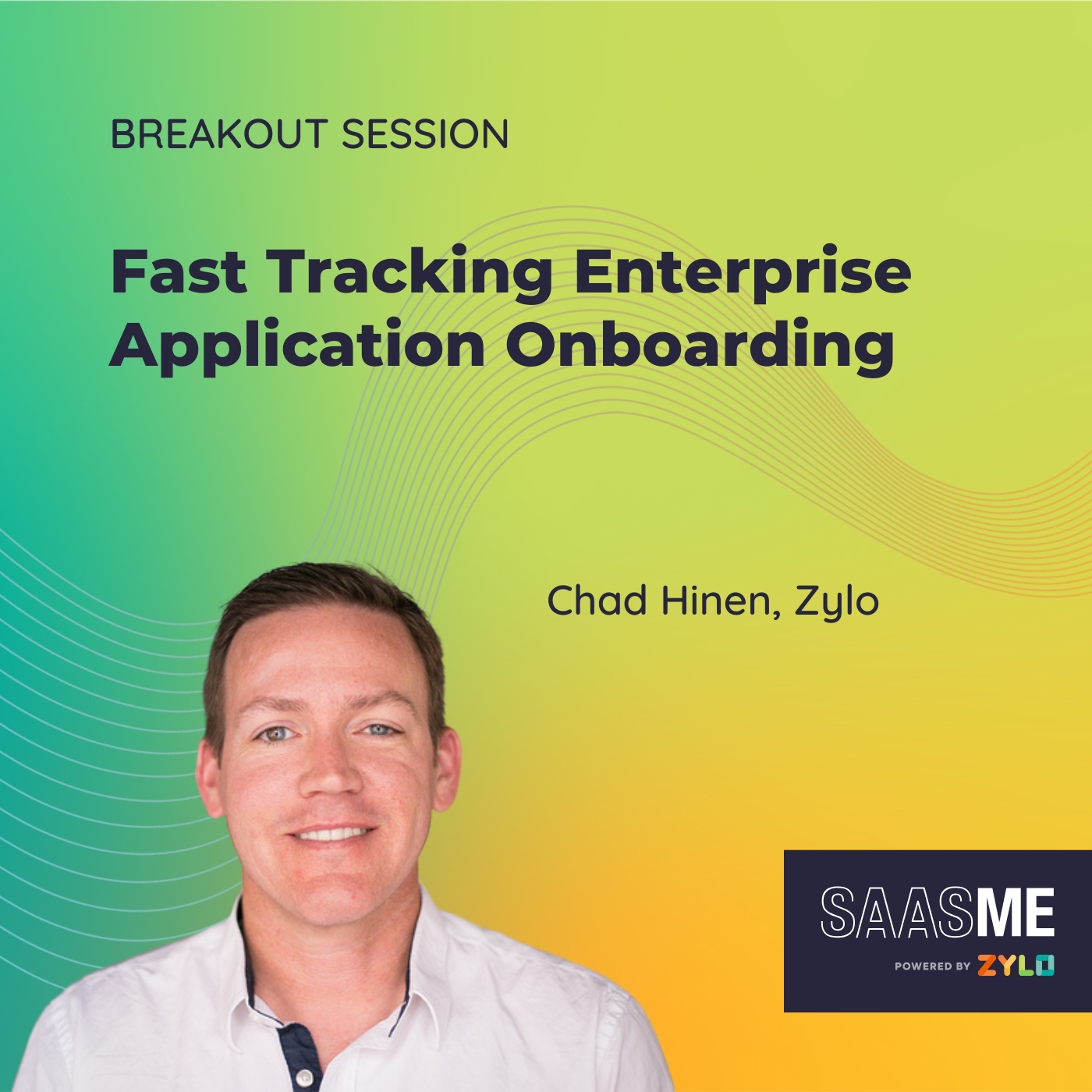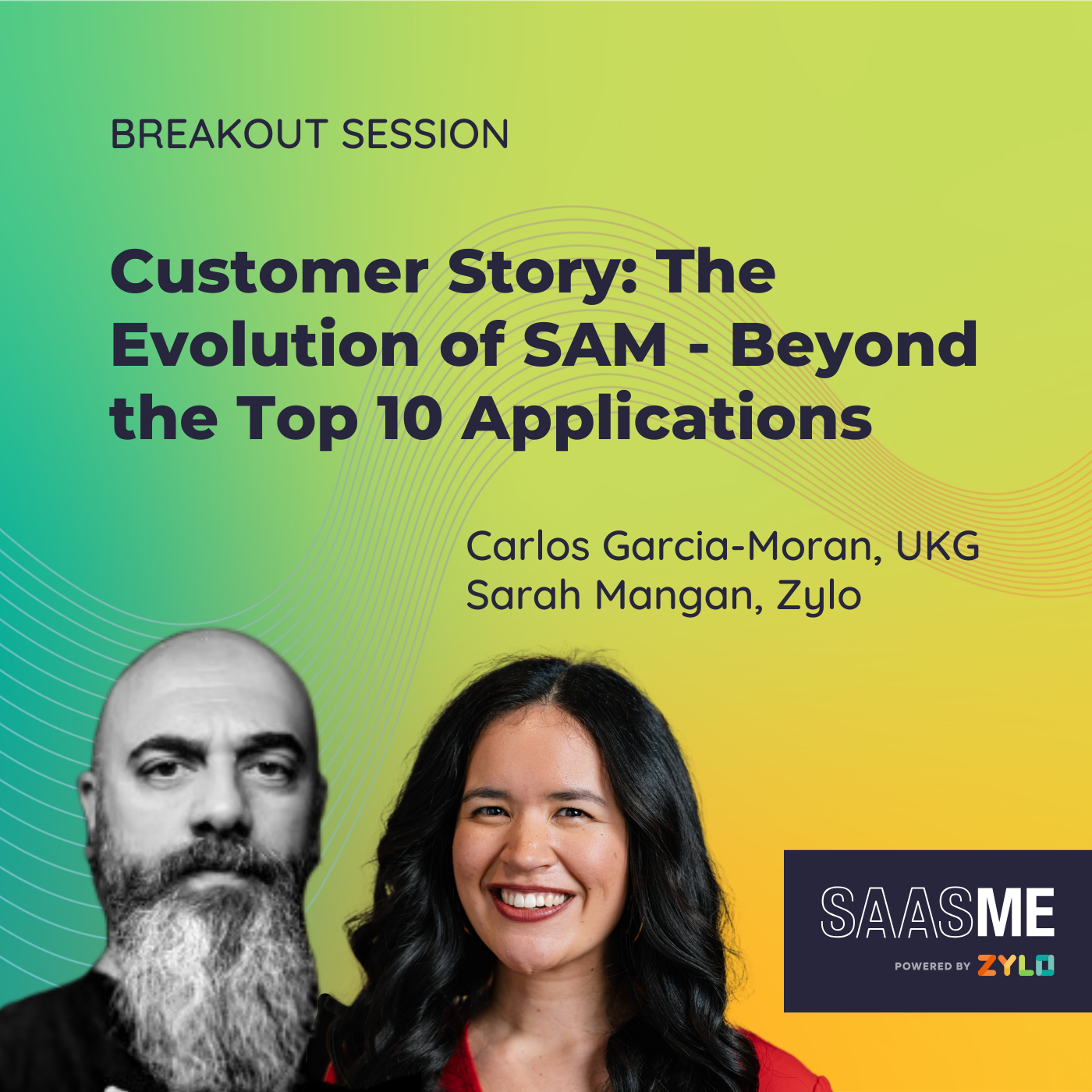Executive Panel: Navigating the Convergence of Cloud, AI and SaaS
- 0.5
- 1
- 1.25
- 1.5
- 1.75
- 2
D. Wayne Poole: Thank you, Meredith. Hello, everyone. My name is D. Wayne Poole. I'm the COO at Zylo and I've been here for nearly two and a half years, and I'm so excited to be able to facilitate today's conversation. Over the past year, we've seen three forces, cloud infrastructure, AI, SaaS, collide at a growing speed, as many of you are aware, I'm sure. The impact of this is truly a balancing act. There are so many vital pieces to manage. The structuring of our teams, the management of budgets, governance of risk. At the same time, we're of course asked to drive growth. This tech convergence presents an incredible opportunity and a daunting complexity as well for CIOs and digital leaders. As cloud continues to grow in overall expense, SaaS pricing models are shifting as we speak, and this new player, AI is moving faster than governance can keep up. But meanwhile, the pressure to innovate has never been greater. I guess what I'm saying is this is just not easy. So today, we're joined by an incredible panel of executives who are not just responding to these changes, but actively shaping how their organizations, Zoetis, Barracuda, and Capgemini are turning this convergence into a competitive advantage. The goal today really is to leave all of the people who are out there watching with real actionable insights that could take us back, and take back to your organizations, you could turn complexity into clarity and disruption into opportunity. Let's get to know our panelists. We'll have each of you guys provide a brief intro of yourselves, your role, your company, et cetera. And then we'll just dive right in. Does that sound good? So let's start with you, Keith. Thank you.
Keith Sarbaugh: Yeah, thanks, DP. Hi guys. I'm Keith Sarbaugh. I'm the Chief Digital and Technology Officer at Zoetis. If you've not heard of Zoetis, we're the world's leading animal health company. We operate across the continuum of care from disease prevention to treatment, all the way through anything animal health related. Thanks for having me.
D. Wayne Poole: Thank you. Siroui.
Siroui Mushegian: Yeah, thank you so much. I'm Siroui Mushegian, and I always like to say that I have the privilege of being Barracuda's CIO. I've been at Barracuda for just under two years now. We're a company who provides complete security solutions in a world of complex threats. So you can imagine one of my biggest concerns is protecting Barracuda itself, and Zylo has become a cornerstone of my tool portfolio that helps me do just that.
D. Wayne Poole: Thank you.
Jez Back: Hi, everybody. My name is Jez Back. I'm a Cloud Economist& Global Offer Leader here in Capgemini. We are a global services integrator with a consulting, I'm sorry, consulting led in what we do, and we take the whole AI and sustainability agenda as a serious priority for us. But really, we're all about helping our clients, really, we like to call them partners, and be their strategic trusted advisor to help them get the most value out of technology.
D. Wayne Poole: Excellent. All right. Well, thank you all from the bottom of my heart. Thank you guys. Taking time out of your busy schedules, you're generous with our time, and appreciate it so much. So let's dive right in. I want this to be a conversation that everybody can learn from, if possible. I'll have a list of questions that I'll go through, but if we veer off, it's all good. I'm interested to hear what you guys have to say. So first of all, as we just talked about these three forces converging. AI, cloud and SaaS. It's really, how are you guys as CIOs and business leaders rethinking your technology strategy to stay ahead rather than be reactive? Let's just start with that. A big one. Keith, you want to kick us off?
Keith Sarbaugh: Sure. Yeah. So if I think about cloud AI and SaaS, what's different when you compare it or contrast it with years past where it was heavy costs and on- prem infrastructure, I think it necessitates more of a platform strategy or platform approach than we've had before. So I think previously we looked best of breed to try to find who was the absolute best at anything we were trying to do, and you integrate those things together with the way things work across these three technologies. I think you just need to take a smarter approach. You need to have fewer units, more strategic relationships with fewer providers. Otherwise, the cost becomes unbearable both to license and maintain, and maintain access, but also to integrate and care and feed for so many disparate systems. So we have a particular focus on a platform- based strategy and a FinOps mindset around cost management. I think that's one thing that I see that's different.
D. Wayne Poole: Excellent. Yeah, we'll get into FinOps for sure. Siroui, what would you add?
Siroui Mushegian: So I think there is such a transformative thing around AI. There's unexpected budgetary increases. There's a need for stricter ROI assessments. You have to be really careful about what you're introducing to your enterprise. You want to make sure that you are doing things in a very thoughtful way, that you have everybody that is putting things into the enterprise that has put forth a careful budgetary approach that they're putting in a business case that is presenting thoughtful returns. So I think that's a new way.
D. Wayne Poole: Gotcha. Yeah, Jez, please add.
Jez Back: Absolutely building on everything that Keith and Siroui said, I think the big shift with all these consumable style technologies is that CapEx to OpEx shift. That comes with a mindset shift as well. So no longer can we just be looking about the funny money CapEx models you can make and you can spread them over and spread risk and all that sort of stuff. We're talking about the here and now. We're also talking about direct attribution of that cost and those investments to value. That's not just technology value. It's got to be about business value. And so that presents new challenges for technologists on how they think about these things. But also now that everyone's a buyer, they've now got to start looking at the accountability model and where people are actually consuming these things in a responsible way, in a knowledgeable, cost- conscious, carbon- conscious way in order to be successful. And just building on the point about AI accelerating things, frankly, playtime's over. The opportunities to experiment with AI and just feel it out, it is going too quickly. Now, people are going to get really, really serious and really thoughtful about those AI investments, about how they go about them, how they call the governance model on that. Actually, checking on that business case that says, " Hey, this isn't working out the way we planned. Let's pull." And actually have been bold enough to turn around and say, " We're going to pull now because it's not working out for us." I think those shifts have really happened. That consumable technology model has just highlighted all of those factors.
D. Wayne Poole: Yeah. That's fascinating. Yeah, Keith. Go ahead. Sorry.
Keith Sarbaugh: I can build on what you're saying there. I know when we make AI investments, different than the way we've made investments in the past, we take a more agile iterative approach. We used to try to figure out the full business case cost and value before we invest a dollar. We've just not figured out how to do that on AI yet. I think the architectures are new, the variable costs are new. So our philosophy is let's get an idea. Let's get a rough business case. Let's kick it off and build it to a POC POV level, and then at that point reassess what we know and make sure that the financial justification is there. As you said, the costs are quite high in some cases, and we want to be very careful.
D. Wayne Poole: Yeah, that's good. Anything to add, Siroui? Plenty of questions on my end.
Siroui Mushegian: So I like what you're saying about just diving right in without being too overbearing with a business case. And that is similar to what we're also going through at Barracuda. We do want people to be careful with what they're presenting. We don't want to just bite off everything that people are putting out there. There are so many tools that people want to add to their portfolio, to their quiver just to get things done, but everything comes with a cost, and everything also comes with a risk. So we want to weigh all of that carefully, especially at Barracuda where we are a security company. So we take all of that super seriously and we want to look at things from a cost perspective, but also from a risk perspective, and we want it to be providing a return. So yes, we want to dive in, we want to check it out, but we also, like Jez was saying, pull it back if it's not really providing the return that we're saying.
D. Wayne Poole: Yeah, perfect. Okay. So we're tiptoeing in, and I don't remember the exact word being used yet, but there's this concept of governance, obviously.
Siroui Mushegian: Yeah.
D. Wayne Poole: When you talk about AI, everyone goes to this governance around the security, the risk, et cetera. " Don't let my data be used," and on and on. But what I heard in there was also a governance around, is it actually going to show value? So this is probably the crux of this 40 minutes together, but how is that balancing act occurring? So Keith, you touched on the use of POCs and whatnot a little bit, but are other frameworks, have you guys developed a framework to say, " Look, we want to invest in AI, but we need return and it has to be..." I'll say risk- free, which is that's saying a lot, but what kind of frameworks are in place? Or what kind of new structures are you using?
Siroui Mushegian: I'll start.
D. Wayne Poole: Please.
Siroui Mushegian: We have developed an AI council. I'm the chairperson of said AI council. We've been running that for several months now. And it is made up of many stakeholders across the enterprise. We've got people from legal compliance, we've got people from our development teams. We actually have a sub council for just our product and development area just because they're so busy with putting AI into our products themselves. So we feel like they need a whole other track. But we've just got this council because we want to make sure that we've got an eye on the amount and quantity of requests that we're getting and we don't want it to go through a separate channel, per se. We still want to use the same processes that we've built that we feel very strong about, but we want to make sure that we grease the skids for all of the sheer quantity of stuff that we're seeing and that we highlight all of the various things that are cropping up about the AI Act or all of the other compliance requirements that might be coming up, or all of the, like I said, the sheer quantity of requests that we're getting and that we highlight the ways that we can go faster about making sure that we justify them or that we just review them as quickly as possible.
D. Wayne Poole: Gotcha.
Keith Sarbaugh: Yeah. Siroui, we implemented two tracks. I guess a two- speed way to think about it. We have aligned with our executive committee and the board that within research and development and our commercial part of our business are the two areas we were going to focus on and bring the heavy resources for the deeper, more complex generative AI opportunities. So golden use cases. I know that's an industry use term. We've really tried to have a focus strategy in the two areas where we thought could drive the most value. Separate from that, we're focused on gen AI for the enterprise, we call it. So what are we doing to drive enterprise adoption of tools like enterprise ChatGPT, CoPilot and the like to get it out into the masses? Because we're finding also very good ideas come up there. Most of our governance attention and investment prioritization happens on the golden use case side, but as things mature and if there's something that reaches a big value proposition with a little bit of investment on the other side, we're trying to find ways to fund that as well. So trying to have a focused approach while also allowing some flexibility for new ideas to come forward is the way we're buying it.
Jez Back: Yeah. I think that's a really important theme that both Keith and Siroui have brought out here, and that's the governance model now demands way more collaboration outside of the traditional norms than ever before. When you're looking at AI, we've got to bring commercial, legal, procurement, finance, executive business and technology together and really consider the decisions we're making. But we can't get wrapped up in just a quagmire of iterative arguments about stuff. Really collaborating together, coming to those decisions involves relationships and actually crossing the boundaries, which naturally people didn't do before. That for me is the biggest change I'm seeing in the governance model. I think it's a really healthy thing, by the way, because actually, it's opening up much wider value- based conversations in the business. And as a result, that's percolating down into other consumer technologies, into other parts of technology roadmap. So lots of people, we can bring a lot of negatives about the changes these things bring and how difficult it is, but actually, there is a number of things that if we work hard at them, and it will take time, it is hard to do, it really unlocks a lot of innovation thinking, which doesn't necessarily have to involve a lot of cost in that aspect. So therefore, the costs that come from AI, the costs that come from large SaaS purchases, from a wide- scale cloud adoption, actually, they could be focused on the money that matters rather than being bolted into getting there and reducing that time to value.
D. Wayne Poole: Yeah. Good, Jez. Thank you. So let's talk about what are the more collaborative pieces of being in business, the budgeting process. So how is this happening? And what I mean by that is budgets are set by priorities in the business. Obviously the whole concept is to be profitable, keep that budget manageable, obviously get your margin and move. The beginning of the year, you set those priorities. But with the quick move, just how agile AI is becoming and obviously is, how are you managing the budget? How do you set a budget? Using AI, do you have a separate, is there a buffer? How does that happen at the beginning of the year? And then I want to talk about the surprises after we cover the AI at the beginning of the year topic. How's that going, guys?
Keith Sarbaugh: Yeah. So there's two versions of this problem we've worked with. It's one, how do you forecast and fund something that is by definition evolving so very quickly?
D. Wayne Poole: Correct.
Keith Sarbaugh: That's the first problem. Second problem is you build these things to scale. Running them is often quite expensive. And what we're finding is while we've centralized the cost in our tech and digital function, the benefit is hitting out in a business P& L somewhere. So trying to be really disciplined on the value case to say, " Hey, we're about to make this investment. We're about to drive a central cost up," but have a reciprocal benefit of P& L somewhere. So we're trying to track that stuff really, really closely. In terms of the upfront investment, I don't know that this is the right answer, but we established almost a venture fund internally to say we're going to invest this percent of our overall tech and digital budget on gen AI ventures. We've been pretty steady now for a couple of years and it seems to be at about the level that it's balancing the funding with the people resources we have to prosecute these things. So for us it's working. And of course if there's some big opportunity that comes up we didn't contemplate, we'll handle that one- off. But for the most part, this venture fund concept has worked well for us.
D. Wayne Poole: Yeah. I've heard it called innovation fund and a couple of other terms as well as we are in the market as well. Anything to add there, Siroui or Jez?
Siroui Mushegian: I'm doing something very similar. I'm trying to fund as much of it as I possibly can in my own envelope and making adjustments as I need to also building buffers. So I've got as much of a buffer as I can build going into this year. Our fiscal year actually just started on March 1st, so we've gone into the beginning of the year with some funding set aside to begin some big projects, but also set aside some funding for some additional things that we don't know that are coming up. But we also know going into these projects that they will yield some return. So we know that we're going to save something in terms of some efficiencies along the way. What that will be, we do not know. We are, as Keith said, we're going to be tracking it carefully because we know that that will be an important part of it along the way. And so I assume that some of it will wind up, I want to say that some of it will wind up paying for itself. At least that's the desire, even though it is very expensive to kick it off.
D. Wayne Poole: That makes sense. Yeah. Jez.
Jez Back: Yeah. Obviously I wouldn't be at the job that I do without having to help the people who have perhaps not as far advance as Keith and Siroui. So many organizations really struggle with budgeting and forecasting for consumable technology. It's hard. It does take quite an advanced level of maturity in an organization to be able to get even within 7% to 9% variance of that on a consistent basis. That's hard. So anyone who's doing that, doing a good job. Well done. But that's across multiple different streams that you've got to do that. So there's this one section, which as Keith described, almost like, not your fixed cost, but almost your most well- known cost base where you can operate that. And exactly, I completely agree with what's been said before. That innovation fund is where you can fund those highly variable unknown knowns, as it were, in terms of your cost base. That being said, often there are opportunities inside the organization where you can find those efficiencies because people are not necessarily deploying cloud workloads or they're not using their SaaS contracts to their fullest extent. They're not necessarily architecting towards efficiency. So you can find some of those things. Let's be honest. Every CFO in the land, 2025 is the year of cost control. The pressure on CIOs and technology leaders cannot be greater about managing budgets. And so where they're going to have to find that fund for innovation often is inside the organization itself. And it's a really, really hard balancing act. The easy answers have already been taken. CFOs, organizations, they've pulled all the cost controls about real estate and headcount and travel bans and all that sort of stuff. Now we've got to go to work and find those operational efficiencies inside not just the technology part of the business, but across the business. And that goes back to that collaboration point which we were referring to about these downstream benefits of value that you are delivering from AI and from these types of projects. Being able to articulate that and having that relationship that says, " Help me out, guys. I'm giving you this. You've got to give me something back in order to make this work." And so CIOs are now becoming ambassadors as much as actual leaders of their own organizations in order to get that bit going. So that collaboration thing pops up once again.
D. Wayne Poole: Yeah. No kidding.
Keith Sarbaugh: Jez, to add in, we try to talk about our spend in terms of run the business versus transform the business. And no surprise to any of you, I'm sure, left unmanaged to run the business spend can consume everything and you starve yourself of transformational funds. So we're trying really, really hard to draw costs out from our managed service providers via consolidation. Our SaaS licensing, that's a huge area. It's my second- largest cash expense in the budget and it's the one that's growing the fastest, demands the most management. And thirdly, around cloud. And all of this, the trick is how do you do more while driving costs down so that we can redirect the investment into the things that are going to matter and differentiate us in the marketplace? So slowing the rate of growth of the tech and digital budget by redistributing from run the business and innovation is easier said than done, but that's what we're trying to do to continue to make investments in things that our customers care about versus run the company and inaudible.
Jez Back: And my one quick counter to that is sometimes it's okay that the bill goes up. Because sometimes we've got cloud workloads or various business processes that consume these on- demand technologies, but they're actually driving more sales, they're driving more capability out in the market, and so the bill's going to go up. So you've got to be able to explain the difference between good growth and bad growth on the bill not just to finance, but to the business as well. And it is actually sometimes okay that the bill's going up. You've got to prove why and where the value is that we come across that value, that tracking of value.
D. Wayne Poole: Yeah. Whether the things are going well or not as well, understanding why is just as important. And also just as a quick comment, the pressure to find that waste is even more important now because the investment in things like AI can be in a complete accelerator for a company as well. So really good point there, Jez. Thank you. So let's take, we've been focused on AI here for a little bit and it is certainly a good example of where costs can be surprises, but also there's this idea of SaaS licensing models changing. Seatbase was so straightforward back in the day, like six months ago. Where now consumption- based obviously is taking front and center. So as we think about that, what we just described as the investment versus finding waste and then setting budgets and trying to have innovation funds planned for it, there are the unplanned that occurs. And it has gotten, I would say consumption- based applications have gotten a little bit of a reputation around this. How are we trying to manage against these surprises? Siroui, anything to comment on there?
Siroui Mushegian: Manage against surprises. So that is always a challenge. You just have to be proactive. I think managing against surprises means that you've set up a good framework to start with, so you try not to have surprises, really. So you've got a way of ensuring that people know how to request services of you, meaning that people know how to place requests for things that they want to use. So they don't go off and try to sneak one around the back end or go into the back channels to start figuring out how to spin up the use of something. They know that they've got to put stuff into the request pipeline or start to build their business case or whatever the case may be. So that to me is how you avoid surprises. And for me, we started doing that when I joined Barracuda. Barracuda has had the enjoyable growth of 20 acquisitions in its 21 years, and during that time there was different playbooks in terms of integration. But for the most part, a lot of tools were just allowed to coexist with each other. And when I joined I realized, oh, this is my second time using Zylo. And I realized, okay, this is a perfect time to onboard Zylo again. And I need it more than ever because I've got to figure out how to drive down my cost with all of these tools. And then I also need to introduce the frameworks and processes for people to know how they should be requesting things. So I don't have this concept of a surprise. So that's really my answer to that.
D. Wayne Poole: Excellent. Thank you. So I'm going to put a finer point on it. When I think about the DataBricks of the world or Datadog of the world, the Snowflake, et cetera, is there anything particular or special that's different than, say, the SaaS of the Salesforce days, 1999 to present?
Siroui Mushegian: Oh, yeah. So right, right. You consume by the month and then have the look back and have a clear surprise at the end of it because you've done something unusual. And so to that end, you have to be more vigilant than you ever were before. So to your point, that's where the frameworks that you set up for yourself are so important. So you've got to have this FinOps mindset from the very moment that you start using these consumption- based models. And you've got to make sure that you're tuning it correctly. And if the way that you're consuming these consumption- based tools is more than you have set out in your budget, then you've got to figure out a way to fix that immediately because maybe it is that you've not accounted enough for it to begin with. Maybe you need to use more because it's better for your company. And in that case you have to fix it right away, but you have to look at it. It could be that you have too many sandboxes or you've got it turned on all the time or whatever the case may be, but you have to figure out how to tune it and to keep an eye on it all the time, and all the people that have the administrative functions to those consumption- based tools are good stewards of those tools and that they are following the guidelines that they should be following.
D. Wayne Poole: Yeah. I think the collaboration thing that you touched on earlier, Jez, it's almost a collaborative accountability, moving some accountability outwards. Any commentary there, Keith or Jez?
Jez Back: Yeah. So going right back to the original question, which, how do you plan for the unknown? I'm going to go a bit Donald Rumsfeld on you now because there are known knowns, there are known unknowns, et cetera, et cetera, and unfortunately, you can't do that purely at a strategic level now. That's going to come down to the operational level, even down to the tactical level where knowing and understanding where these things are going and when you are making these decisions, when these events happen, those unknown unknowns, that we can react to them within a set of guardrails and a framework which we can respond to. This does go back to the collaboration bit, but on that whole FinOps story is when you're looking at most consumable IT, you can normally act pretty quickly and you can get results pretty quickly. SaaS is a bit more of a challenge because frankly, it depends on how long your contract is. And so there is potentially that long tail as well, but people shouldn't look at that necessarily as a negative because when you fund a FinOps team, and FinOps is not just cloud, FinOps has now expanded out to all of the consumer types of technology, that can help fund that team. So then we come to the point of taking cost out, to then cost avoid, and that's when the real hard conversation start, because people say, " Well, there's nothing more to save. Let's back it up, let's stop. It's fine. We don't need it anymore." Unfortunately, it's, can you afford not to do that anymore? And that's a real challenge. And then just final point on all of that sort of stuff is everyone's become a buyer. And I said that before, but that cultural aspect and that investment in education, empowering and enabling people to be cost conscious, carbon conscious with those decisions is absolutely critical. So that means actually getting out and speaking to people and changing the dial. That's a long journey. This is not an overnight thing that you can do. So that investment needs to consider short, medium, and long- term benefits. So when you are using tools, you're going to choose the right tool, use the correct tool correctly, and then use them correctly and commit to them, right? And get people to understand inaudible. Get back to Keith's point. Rationalize down to the things where you can train people and they can be competent over a long period of time and you don't get that skill fade.
D. Wayne Poole: That's right. Before we jump into FinOps, Keith, in some of the discussions we've had, you had mentioned a gamification, drive some accountability through the inaudible. I think people might appreciate that tactic.
Keith Sarbaugh: Look, I think none of us dream, well, most of us anyway, maybe some of us on this call do, but most of us don't dream at night about how I'm going to wake up tomorrow and better manage my cloud spend, right? There's different things we would rather be doing. Okay. Jez, you aside, maybe most of us don't dream that way. I just think it's one of these disciplines. It's like having a proper diet. You can't just set it and forget it. You have to be committed to it. Even in the face of other sexier, more exciting things to do, you just have to remain disciplined to cloud cost management, SaaS cost management. In our company, we've established targets. We have a cloud council that reviews our cloud spend on a regular basis. We set targets and we have scoreboards that show how we're progressing towards the targets. And I won't say there's some big glamorous prize, but it is clear area by area, where are we finding the efficiency? Where are we finding the savings? And it makes a topic that's otherwise a little bit boring and mundane into something that we can joke with each other about and get each other about and inaudible each other a little bit. inaudible.
D. Wayne Poole: That's good. Yeah. Thank you, Keith. All right. So FinOps, the FinOps Foundation, they released their state of FinOps just maybe three weeks ago. They've now added cloud plus, which is all the technology spend. Jez alluded to it just a second ago. And so they're obviously recognizing the value that it can be found in SaaS in addition to other technology spend, obviously AI. But let's talk FinOps. Siroui, I'll start with you. How has that evolved at Barracuda? And what is the role of FinOps as it relates to the CIO's role here and how SaaS plays into that? And we'll get commentary from everybody.
Siroui Mushegian: FinOps is very interesting just in life. Because to your point, it has evolved as a function that was very much off to the side. It was a reporting function where you just had numbers that were feeding into a dashboard and maybe a report got emailed out once in a while or maybe every month or week or whatever, and people might open the email and read it and have a reaction and you would deal with it not proactively, let's say. And that has turned into maybe one person or more than one person, an adjunct to the FP& A team that is very much joined at the hip with the CIO umbrella group and is acting as a very strong partner to the decisions that we make and helping us not just detracting from the way that we operate, but really being a strong supporter of the decisions that we help others make. So instead of trying to feel like you're coming from not the land of no, but trying to help people make decisions that they don't want to make because it's the unpopular opinion, but they'll help us with trying to come up with models of things or they're there to help us provide help and assistance so that people understand going into the work that they're trying to do or the decisions that they're trying to make, they're there to help us. It's just a whole different world because they're an actual function that is not just a report that comes out, but a team of people that are there to keep an eye on the comings and goings of the work that we're doing. So if it's the licensing that happens out of any of the tools that we're using, if it's the consumption based models of the cloud that we're using for any of our products or of our internal IT, if it's any of those things, those people's life's work is just to keep an eye on that and to be making sure that we're operating within confines of a budget that we're trying to set and keep within. So to me, it's a whole new world of a partner that is helping us stay honest with what we're trying to do.
D. Wayne Poole: Excellent. Yeah.
Siroui Mushegian: And they have technical expertise, so they're not just there with numbers, but they really understand the technical part of it.
D. Wayne Poole: That's good. That's good. Keith, anything from inaudible?
Keith Sarbaugh: Yeah, no, I agree with what Siroui said. It's a team sport. It has to be tech, digital, finance, procurement altogether on this. The one thing I'll add is I'm starting to appreciate more and more every day the importance of making smart decisions up front. It sounds very obvious, I know, but hosting, we have a hybrid cloud strategy and we're not a company that thinks our entire future, everything is hosted in the cloud. Our software platforms and our processes just aren't that mature. It doesn't work for us. So when we're looking at new workloads and hosting decisions, we have a pretty rigorous process to say, does that fit in the cloud? Does it better fit on- prem or in a colo somewhere? That's the new angle, I'd say, I've taken on cloud fin- ops lately is just making good decisions up front. I mentioned platform strategy before. Rather than bring another new tool or a new vendor into the environment, how do we make better use out of what we already have?
D. Wayne Poole: Gotcha. Jez, what would you add?
Jez Back: So exactly as Siroui said, FinOps has gone for the tactical level of someone howling at the moon, hoping that someone will make a change, to now a much more strategic view where the business and executives are now taking note, which is a good thing. It is all about, this is the big challenge with FinOps. When you are asking people to make a micro change of a very infinitesimally small amount of money to their workloads, to whatever they're doing, but seeing it aggregate up and up and up into the millions and the tens of millions of dollars, that's when it really matters. And getting that message across from people to understand is hard. So a FinOps team, and it's not just one person because you need the technical, you need the change agent, you need the finance mind, you need that commercial mind, it's all got to be built around the idea that we are going to shift left. So then you'd go early about thinking about cost and value of non- functional requirements right from the start. And it's all about achieving business value at the end. And telling that story, taking people on that journey takes time. But when people are doing it and they're doing it right, the rewards are huge. And competitive advantage exists and it's created. And that's something that people are now really, really caught on to. The last thing I would say about FinOps is now it's much more than just cloud cost optimization management tool. It's about an ecosystem that really, really plays in towards business value. And when those things are brought together, that's when the magic happens.
D. Wayne Poole: That's very good, very good. So the idea that there is value to be had in SaaS, eliminating waste, creating more productivity, et cetera, seems... I'm talking to a biased crowd here. We're talking about multiple Zylo, multiple times Zylo users, Jez leading an initiative at Capgemini involving SaaS, the game here. Why do you think that is that it is coming on now? We see the costs, we see in the OpEx side of the world traditionally, although it's this convergence is happening, OpEx and CapEx. But we see this, but the recognition to act has taken a little time relative to, hey, let's find the waste in SaaS. Why do you think that is relative... Cloud is so obvious because it's one line item, typically. But how can, or in your worlds, what has occurred that has created this renewed or energetic focus, renewed energy on finding waste in SaaS? Particularly for the FinOps Foundation. Seems relatively new.
Jez Back: I'll take that one first.
D. Wayne Poole: Yep.
Jez Back: Firstly, let's just talk about the global economic situations in a post- pandemic economy. Cost control and the recovery of businesses from that highly disruptive event has really focused the business, especially the CFO, on cost control. And it's taken time for everyone to start getting into the hard work of operational efficiency. And let's be honest, managing SaaS and getting on top of SaaS to be hyper- efficient is when we're really going to work. And that's why you need effective tooling effective teams to really, really drive that through. That's the biggest driver. I think the other driver is that now people are seeing the value from cloud FinOps. They're now asking that question of other on- demand technologies.
D. Wayne Poole: Yeah. Good. Very good. We've got about 40 seconds left. Anything to add, Keith or Siroui, on that topic?
Keith Sarbaugh: No, I just-
Siroui Mushegian: inaudible.
Keith Sarbaugh: Oh, sorry. Go ahead, Siroui.
Siroui Mushegian: No, you go.
Keith Sarbaugh: I said it earlier, I think. In my budget, it is the second- largest cash expense, so nothing consumes more cash in our budget than Comp and Bin versus SaaS. And it's the one that's growing the fastest. I think we're growing 14% year over year if you look over the last five years. That's a bad combination when those two things are together. And that's what sparked our interest in it and why we're so disciplined and serious about SaaS cost management as well as cloud cost management.
D. Wayne Poole: Well, thank you all very, very much. I hope the listening audience got as much out of this as I did. And from Zylo's heart, thank you very much. We appreciate it immensely. Have a great rest of your day. Back to you.
Keith Sarbaugh: Thanks, DP.
D. Wayne Poole: Thank you.
Siroui Mushegian: Thank you.
Jez Back: Thank you.
DESCRIPTION
Cloud, AI, and SaaS are colliding fast, forcing organizations to adapt or risk being left behind. Learn how innovative leaders at Zoetis, Capgemini, and Barracuda Networks are successfully navigating this rapid change—leveraging FinOps to control costs, balancing AI adoption with governance, and driving smarter, data-driven decisions. Discover actionable insights to mitigate risk and turn complexity into your greatest opportunity.
Speakers:
- Keith Sarbaugh, Chief Digital & Technology Officer at Zoetis
- Jez Back, Global Offer Leader at Capgemini
- Siroui Mushegian, Chief Information Officer at Barracuda Networks
- D. Wayne Poole, Chief Operating Officer at Zylo
Today's Guests
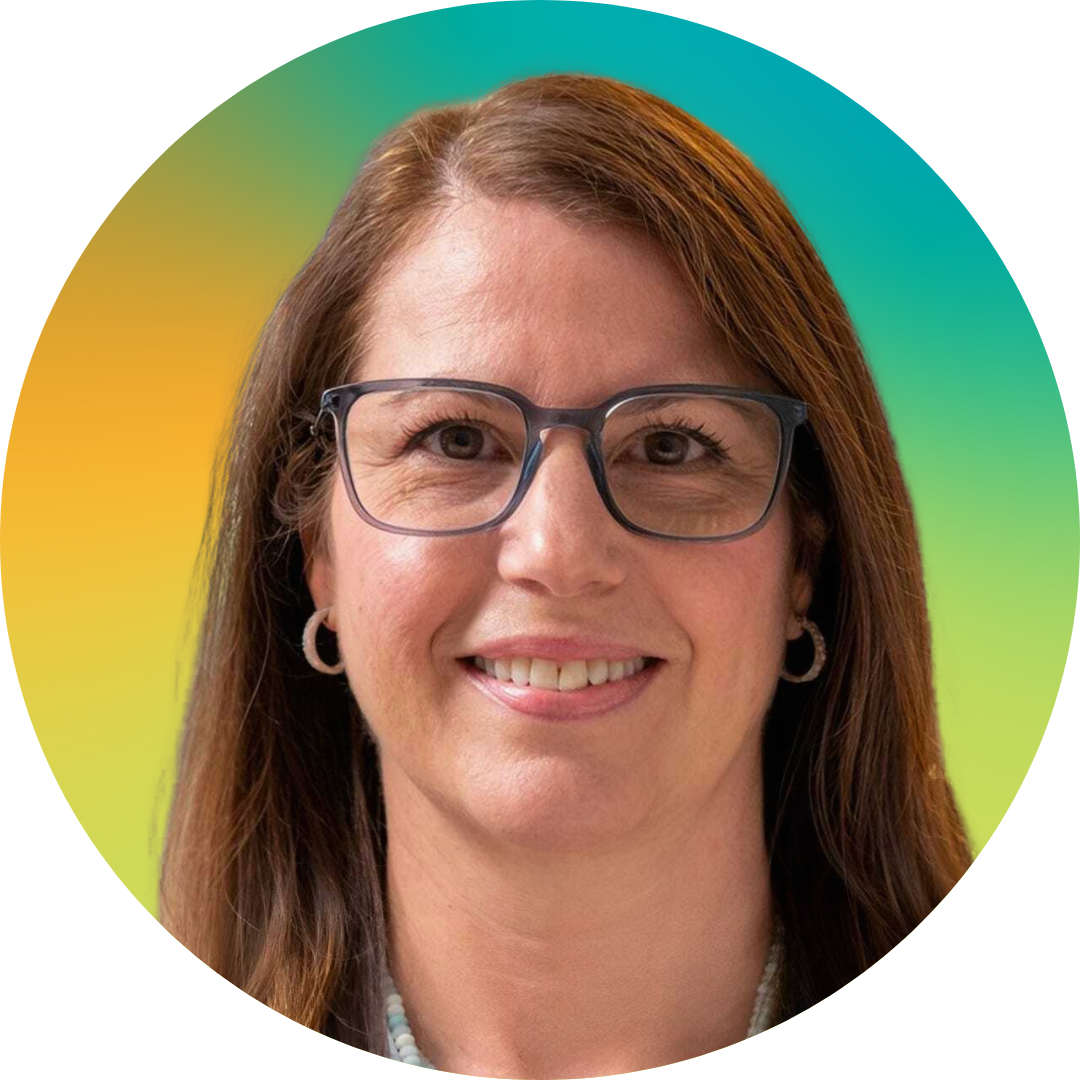
Siroui Mushegian
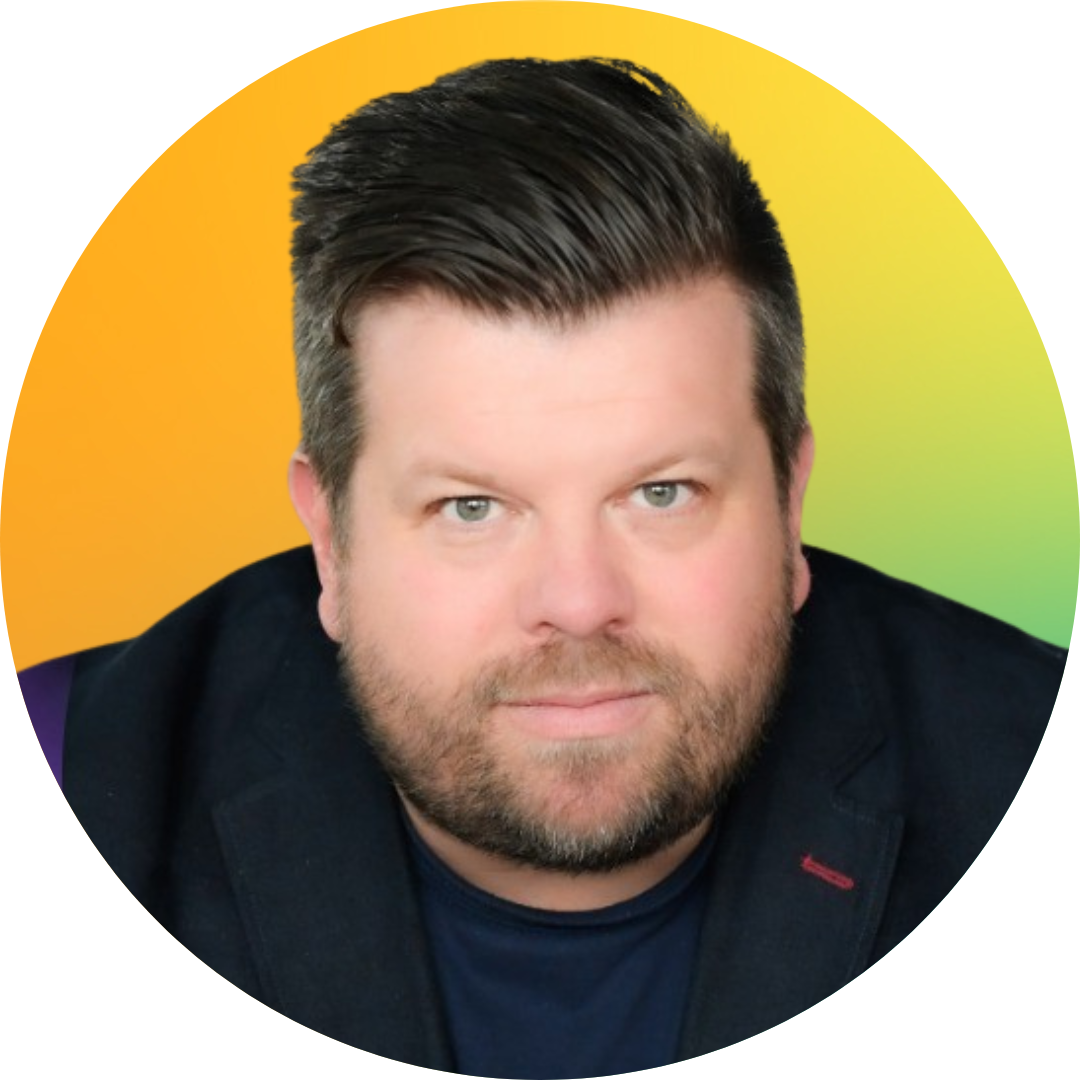
Jez Back
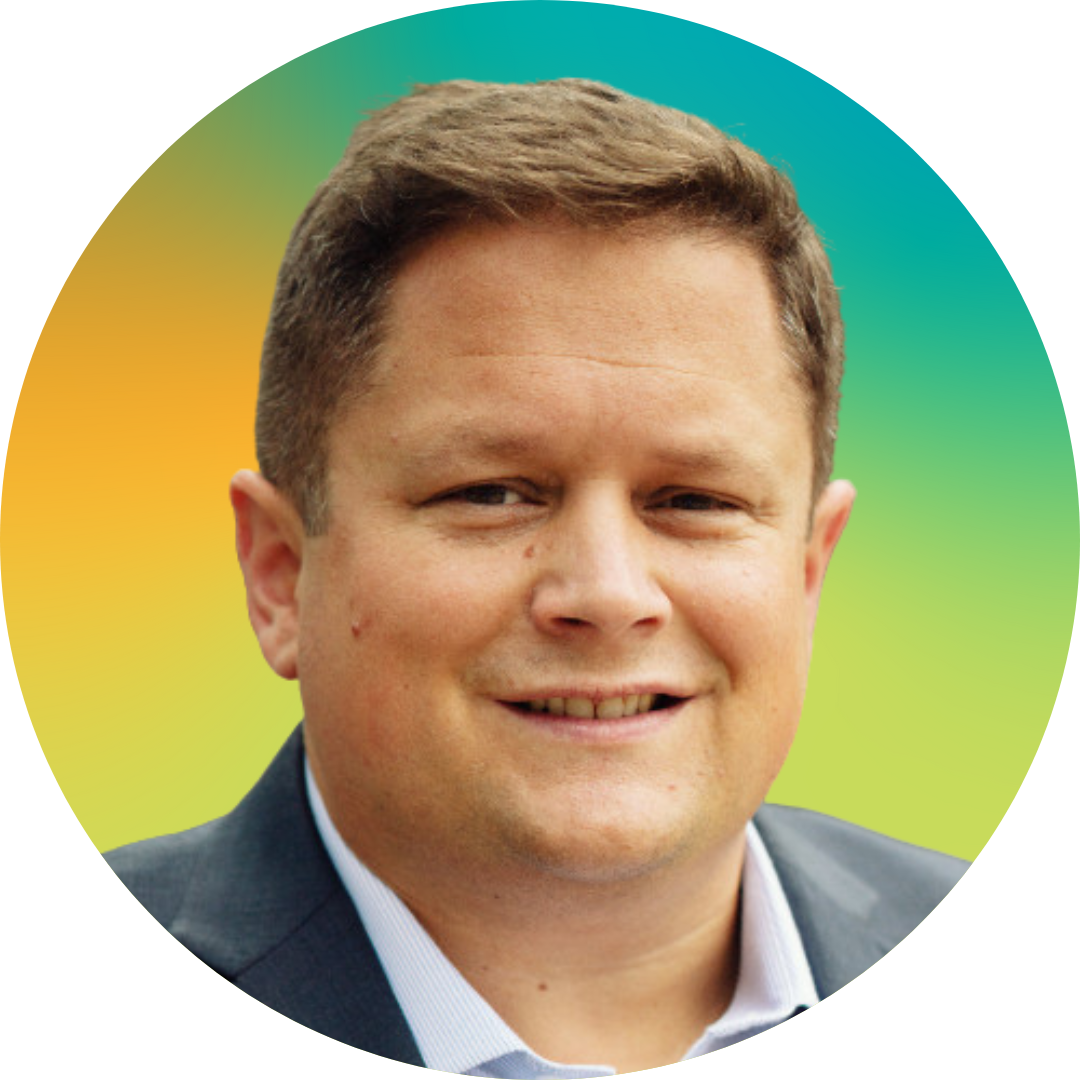
Keith Sarbaugh


